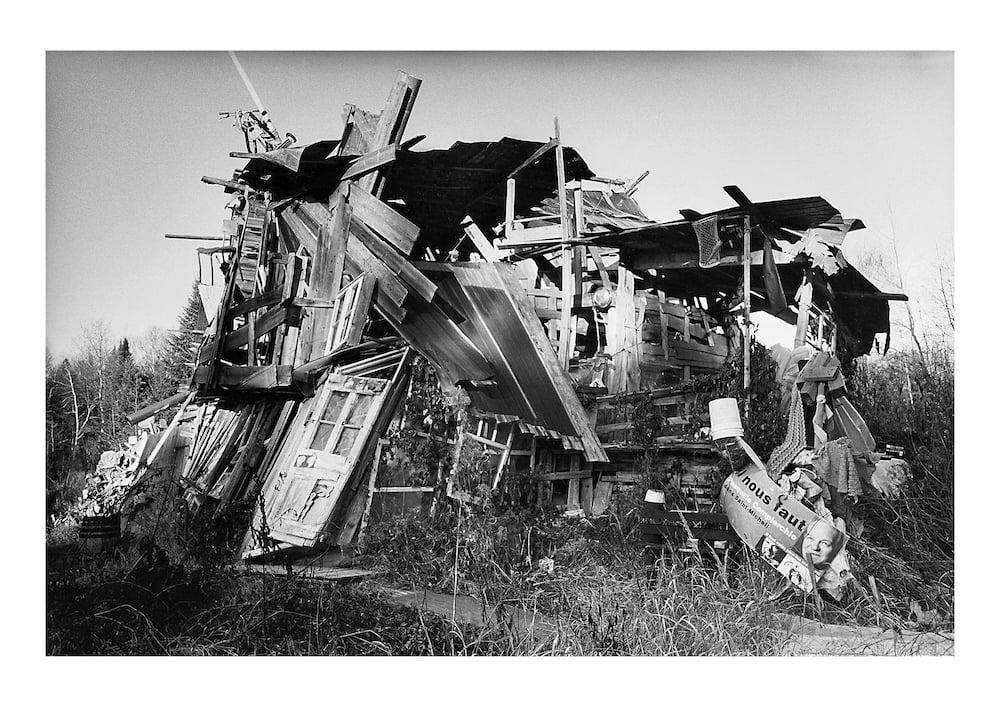
THE DAILY PIC (#1618): Mario Del Curto took this photograph of a peculiar assemblage of rural detritus piled up by an untrained artist named Richard Greaves, from southeastern Quebec. That photo and others from the same Greaves-inspired series are in the show called “The Keeper,” now at the New Museum in New York. It may make sense to think of those photos as talismans that stand for the entire exhibition and the principles that govern it.
I think these images get at one of the very most important inventions of modern art: The “found object” – the idea that you can take something out of its normal context and decide to look at it in esthetic terms. Picasso and other early modernists did that with ritual artifacts from Africa and Polynesia; Jean Dubuffet did it later with furnace slag and pictures by psychotics. There may even be a sense in which all abstraction requires something like that same readjustment of our expectations and categories – taking patterns and compositions that have no obvious content, and deciding to find meaning and beauty in them.
With the New Museum “collaborations” between Greaves and Del Curto, we get a double or even triple dose of found-object-ism. Greaves began by assembling found detritus into patterns and piles that he found meaningful. Then the skilled photographer Del Curto pointed his lens at what Greaves had done, composed and arranged his image, and by pressing his shutter made sure that the whole affair entered the world of art. In a final and necessary move, the curators who put the images into the “Keeper” show made Del Curto’s decision stick for the culture at large. Most of the other pieces in the New Museum show also depend on something crossing over from non-art into art. “The Finder” might be a better name for the exhibition.
It may be getting at the way that absolutely all art gets made. You could say that all art, any art, only exists because of a decision that we have jointly made to declare “art” a category we believe in and care about, and then to “find” objects to put into it. Those can be piles of trash thrown together by an outsider, or some (but not all) photographs, or even pictures made for Italian churches six centuries ago then later pulled out and put into museums. (Courtesy Mario Del Curto and Andrew Edlin Gallery, New York)
For a full survey of past Daily Pics visit blakegopnik.com/archive.